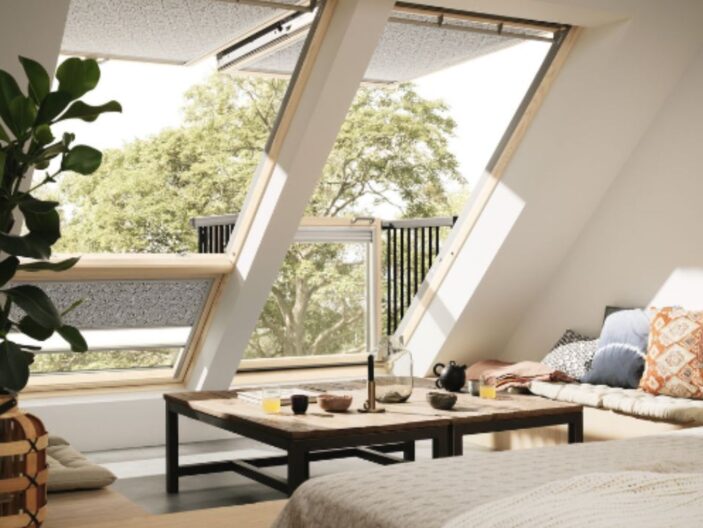Considering a loft conversion for your home? One of the key factors to keep in mind is the minimum ceiling height required to create a functional and comfortable living space.
We explore the different types of loft conversions, the reasons why people choose to convert their lofts, and how to measure the ceiling height in your own space.
Additionally, we discuss solutions available if your ceiling height is too low. Learn everything you need to know about loft conversions!
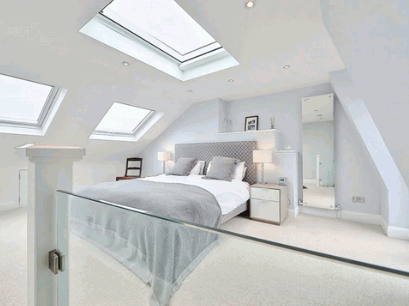
What Is A Loft Conversion?
A loft conversion is a popular way to maximize the use of underutilized attic space in your home, transforming it into a functional room or living area. Many homeowners opt for this renovation to create additional space without the need to move.
Loft conversions offer a versatile solution to expand living space in various ways, including creating a cozy bedroom, a stylish home office, or even a luxurious lounge area. These projects not only enhance the functionality of the home but also add significant value to the property. Bespoke Lofts excels in tailoring these conversions to match the unique needs and preferences of each homeowner, ensuring a seamless blend of practicality and aesthetics.
Check out: How Much Is A Loft Conversion To A Bedroom
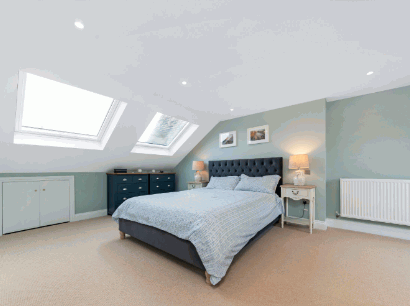
Why Do People Convert Lofts?
People convert lofts for various reasons, such as creating additional living space, increasing property value, and optimizing the head height for comfort and usability, as highlighted by the Nationwide Building Society.
One of the specific benefits of loft conversion is the potential to add extra bedrooms or create a dedicated home office or playroom, providing practical solutions for expanding families or those seeking a designated workspace within the comfort of their own homes. These additional rooms not only enhance the functionality of the property but also add significant value to the overall worth of the house. Financially, investing in a loft conversion can result in long-term savings by increasing the usable square footage without the need for costly extensions or moving to a larger property.
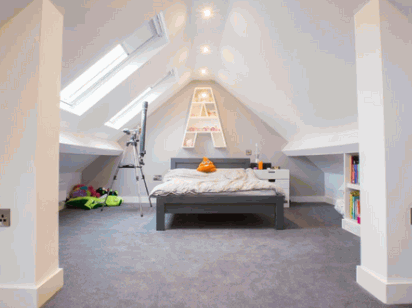
What Are The Different Types Of Loft Conversions?
There are several types of loft conversions that one can consider, each offering unique benefits and design possibilities. Design for Me has outlined the most common types, including dormer, hip-to-gable, mansard, and Velux loft conversions.
Dormer Loft Conversion
A Dormer loft conversion is an extension to the existing roof, which creates additional floor space and headroom, providing a versatile room layout as recommended by experts like Simhika.
One of the key structural aspects of a Dormer conversion is that it involves adding a vertical wall to an existing sloping roof, typically on the side or rear of the property.
This design element not only expands the available living space but also allows for the installation of larger windows, which significantly enhance the amount of natural light entering the room.
The increased natural light not only creates a brighter and more welcoming atmosphere but can also help reduce energy consumption by relying more on daylight rather than artificial lighting.
Dormer conversions are incredibly versatile and can be utilized to create various room types, such as spacious bedrooms, cozy home offices, or stylish en-suite bathrooms.
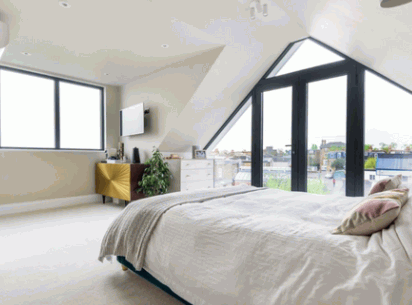
Hip-To-Gable Loft Conversion
A Hip-to-Gable loft conversion involves extending the hip of the roof to create a gable end, significantly increasing the usable space within the loft, as handled by Add a Room.
Such a conversion is particularly suitable for homes with hipped roofs, as it maximizes the available space by transforming the previously underutilized attic into a functional living area. With this expansion, homeowners can create various room layouts, from spacious bedrooms to home offices or even a cozy reading nook.
The additional headroom gained from the gable end allows for more creative design options, such as installing skylights or creating unique alcoves that enhance the overall aesthetic appeal of the room.
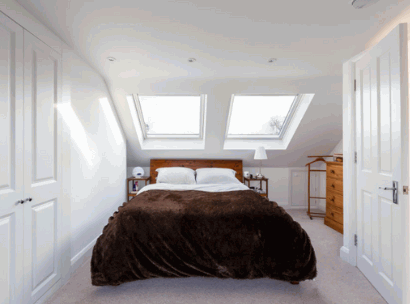
Mansard Loft Conversion
A Mansard loft conversion involves altering the structure of the roof to create a nearly vertical wall, maximizing the available space and headroom, often endorsed by ARB for its architectural benefits.
Obtaining planning permissions for a Mansard loft conversion typically involves seeking approval from the local council, as it changes the roofline significantly. This process ensures that the alterations conform to building regulations and that neighboring properties are not adversely affected.
The key advantage of a Mansard loft conversion lies in the enhanced space and design flexibility it offers. By adding a full-height wall, homeowners can achieve a more spacious and aesthetically pleasing living area compared to other loft conversion types. This structural change also allows for the incorporation of larger windows and enhanced natural light, creating a bright and airy atmosphere within the converted space.
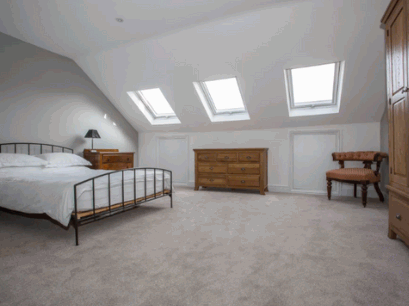
Velux Loft Conversion
A Velux loft conversion involves installing Velux windows into the existing roofline without altering the structure, making it a cost-effective way to increase natural light and maintain ceiling height, as recommended by S3DA design.
Velux windows are renowned for their superior quality and design, ensuring durability and aesthetics for your loft space. The simplicity of installation means minimal disruption to your home during the conversion process, saving both time and money. The cost benefits of using Velux windows make it a popular choice for homeowners seeking an affordable way to enhance their living environment. With the added advantage of maintaining ceiling height, this type of conversion is particularly suitable for lofts with sufficient existing height, providing a seamless integration of natural light and space.

What Is The Minimum Ceiling Height For A Loft Conversion?
The minimum ceiling height required for a loft conversion varies, but most regulations suggest a minimum head height of 2.2 meters to ensure comfort and safety, as recommended by RICS.
Building Regulations For Ceiling Height
Building regulations stipulate that the minimum ceiling height for a loft conversion should generally be around 2.2 meters, as per the guidelines provided by RICS.
Ensuring compliance with these regulations is crucial to not only meet safety standards but also to avoid future issues. If the minimum ceiling height is not met, it can lead to a cramped and impractical living space, posing safety hazards for the occupants. During the planning stage, it’s essential to work closely with architects and building inspectors to ensure that all the necessary requirements are being followed, such as adequate headroom for comfort and functionality.
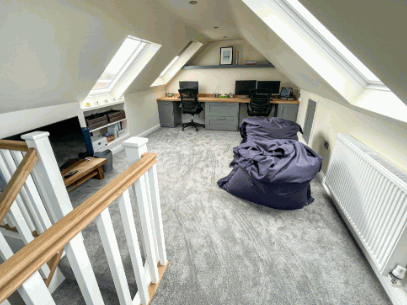
Factors Affecting Ceiling Height In A Loft Conversion
Several factors affect the ceiling height in a loft conversion, including the original head height, roof pitch, and any structural alterations needed, as discussed by Construct and Furnish London.
One crucial factor impacting the final ceiling height is the original head height of the space. This distance from the finished floor to the lowest point of the ceiling sets a fundamental limit on how high the room can ultimately be.
Roof pitch is another significant determinant, as steeper angles can provide more usable space beneath. This may also lead to challenges in maintaining optimal ceiling height.
Structural alterations, while essential for creating a functional loft space, can sometimes encroach on available headroom. Careful planning and design considerations are essential to maximize both square footage and ceiling height.
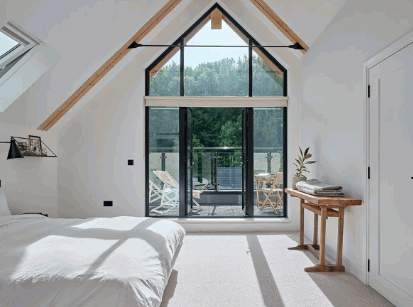
How Can You Measure The Ceiling Height In Your Loft?
Accurately measuring the ceiling height in your loft is crucial for determining its suitability for conversion. This involves checking the height between floor joists, the ridge and eaves, and the highest point of the loft.
Measuring The Height Between Floor Joists
To measure the height between floor joists, use a tape measure to record the vertical distance from the floor to the bottom of the joists.
Ensure that the tape measure is held taut and vertical to get an accurate measurement. Make sure to take multiple measurements at different points along the joist to account for any variations in height. It is essential to document these measurements accurately for future reference and for any planning purposes related to loft conversions.
Measuring the height between floor joists is crucial for evaluating the feasibility of converting a loft space into a habitable room. It provides valuable information on the available headspace, which is essential for determining whether the area can be comfortably used for living or working purposes.
Measuring The Height Between The Ridge And Eaves
Measuring the height between the ridge and the eaves involves determining the vertical distance from the highest point of the roof (the ridge) to the lowest point where the roof meets the outer walls (the eaves).
One essential tool for measuring the height between the ridge and eaves accurately is a long measuring tape or a measuring stick. Begin by standing at the base of the wall under the highest point of the roof, ensuring the tape measure is vertical. Extend the tape measure or stick it upwards until it reaches the ridge, noting the measurement. This distance is crucial as it determines the potential headroom and space available when planning a loft conversion.
Measuring The Height At The Highest Point Of The Loft
To measure the height at the highest point of the loft, which is typically the ridge, use a tape measure to determine the vertical distance from the floor to this point.
When taking this measurement, ensure that the tape measure is held straight and without any slack to get an accurate reading. It’s advised to have someone assist you by holding one end of the tape measure at the floor while you extend it up to reach the ridge.
Accuracy is key in this process as even a small error in measurement could greatly impact the feasibility of the conversion plan. Therefore, double-check the measurement to avoid any mistakes that could lead to costly adjustments later on.
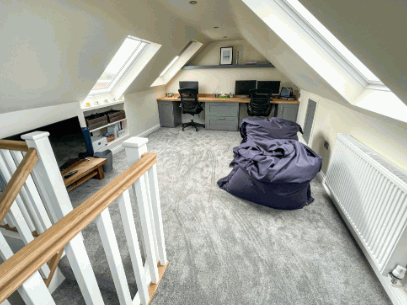
What Are The Solutions If Your Ceiling Height Is Too Low?
If your ceiling height is too low for a loft conversion, there are several solutions to consider, including reducing the floor thickness, raising the roof, or lowering the ceiling below, as suggested by Construct and Furnish London.
Reduce The Floor Thickness
One effective solution to increase ceiling height in a loft conversion is to reduce the floor thickness by using thinner joists or alternative flooring materials.
By opting for thinner joists or alternative flooring materials, it is possible to achieve a significant gain in available headspace within the loft area. The concept behind this method is straightforward – the reduction in floor thickness directly translates to an enhancement in the vertical clearance of the room. Whether it’s utilizing engineered wood products, such as laminated veneer lumber or oriented strand board, to replace traditional joists, or exploring innovative composite materials designed explicitly for space-saving applications, there are various options to cater to diverse structural requirements.
Raise The Roof
Raising the roof is another viable option for increasing ceiling height in a loft conversion, although it involves significant structural changes and planning permissions.
When considering raising the roof, it is crucial to understand the process involved. This typically includes reinforcing the existing structure to support the additional weight and height, as well as potentially extending the walls upwards. Architects or structural engineers are often consulted to design the modifications, ensuring compliance with building regulations.
The costs of raising the roof can vary depending on factors such as the size of the roof, materials used, and labor involved. It is essential to budget for not only the construction but also any necessary permits and professional fees.
Despite the challenges and costs, raising the roof can offer numerous benefits. It can transform a cramped space into a more open and airy room, allowing for better natural light and improved insulation.
Lower The Ceiling Below
Lowering the ceiling below the loft can create more headroom above, making the loft space more usable and comfortable.
Structurally, this process involves carefully adjusting the height of the ceiling in the room directly beneath the loft. By lowering the ceiling, more vertical space is gained for the loft without compromising the overall stability of the structure.
The process typically includes reinforcing the lower ceiling to ensure it can support the weight of any furniture or occupants in the loft. This solution not only enhances the aesthetics of the loft but also improves the functionality by allowing for taller individuals to move freely without feeling cramped.

